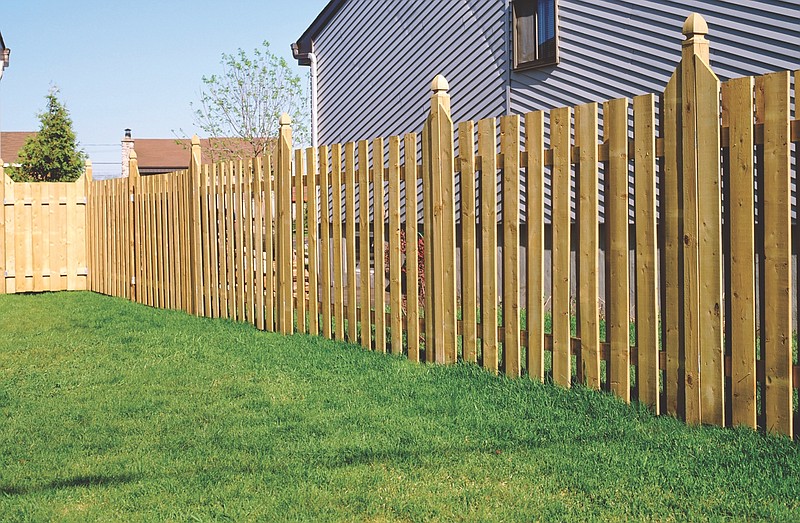The popularity of vibrant lawns, from suburban yards to rural ranches, is often cast as a primary culprit in the ongoing war to manage water and wastewater properly. But experts with the University of Arkansas Division of Agriculture caution that the public's perception that lawns require a lot of watering isn't always the case.
Turfgrasses have low irrigation requirements relative to other landscape plants. Some people mistakenly assume that lawns need an abundance of irrigation water because it is common to see lawns being watered excessively, even when it is raining.
The benefits of having a healthy, well-maintained lawn are categorized into functional, recreational and aesthetic. Functional benefits include erosion control, dust prevention and heat dissipation, among other benefits. It also includes carbon sequestration, which removes carbon dioxide from the atmosphere and held in solid or liquid form.
The problem is with the improper use of an automatic irrigation controller, which should only be in the "on" position when the soil is dry, or ideally, should be fitted with a moisture sensor, which will prevent it from operating when the turfgrass does not need water.
According to a study released in 2015 by NASA scientists, turfgrass is the largest irrigated crop in the United States because it covers about 2 percent of the continental U.S. surface, a claim Michael Richardson, a professor with the University of Arkansas Horticulture Department, disputes.
"Public perception is often poor, but it is based on the few bad apples," Richardson said. "Less than 20 percent of turfgrasses are irrigated, meaning that most lawns require little to no maintenance other than mowing," he said. "When people make statements that 'turf is the largest irrigated crop in the U.S.,' they are grossly incorrect," because most turf grasses are not actually irrigated, Richardson said.
One misconception is that a lawn must be watered every day. Paired with access to fertilizers and pesticides through public stores, it paves the way for an unhealthy lawn.
A properly maintained lawn is not a problem. Usually, when articles or books are published that are critical of lawns, the authors assume worst-case scenarios such as excessive irrigation and over-application of toxic pesticides. There are options available that have low human and pet toxicity and are environmentally safe when label directions are followed.
Arkansas homeowners should know it is possible to get the lawn they want without negatively impacting the environment. The University of Arkansas has a "Turf Help" website section to determine how to take care of grass.
The consequences of having a lawn are minimal, if it is done right. Taking care of a lawn means knowing what has to go into it. The first part is finding the best turfgrass species for a particular site, keeping it at the ideal height and researching how much fertilizer, irrigation or pesticides are needed.
Determining the best turfgrass for a particular area depends on the temperature extremes and whether the site is shaded and if irrigation is available. The most common type of grass in Arkansas is bermudagrass, according to the Choosing a Grass for Arkansas Lawns University of Arkansas Division of Agriculture publication.
The Cooperative Extension Service offers free soil testing in every Arkansas county. The test measures the soil's nutrient levels and needs. Maintaining a healthy, environmentally safe lawn after initial research is about continual safe application of water, fertilizer and pesticides.
About 30 percent of average household water goes toward outdoor water use, according to the Environmental Protection Agency. In the summer months, it can be even higher. As much as half of irrigation water simply evaporates if irrigation is taking place at the wrong time.
People should be concerned about lawns, but not because of what lawns themselves do. Rather, people should be concerned about overwatering their turfgrass and producing excess amounts of runoff.
To learn more about water conservation and properly caring for your lawn, contact Jimmy Driggers, Garland County Extension agent, at 501-623-6841 or [email protected]. You may also visit our website at http://www.uaex.uada.edu and follow the links to a wealth of information from livestock to agriculture, to gardening, family and consumer science topics, exercise, etc.
4-H information
There are several 4-H Clubs for Garland County youths who are 5 to 19 years old. For more information on all the fun 4-H activities available, call Carol Ann McAfee at the Extension office, 501-623-6841, or email [email protected].
Master Gardener information
Master Gardener meetings are held on the third Thursday of each month at the Elks Lodge. They're open to the public and guests are welcome. For more information call Luke Duffle at 623-6841 or email him at [email protected].
EHC information
Are you interested in joining an existing Extension Homemakers Club? EHC is the largest volunteer organization in the state. For information about EHC, call Alison Crane at 501-623-6841 or email [email protected].

